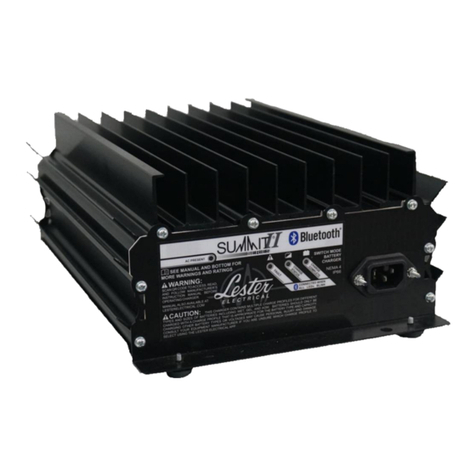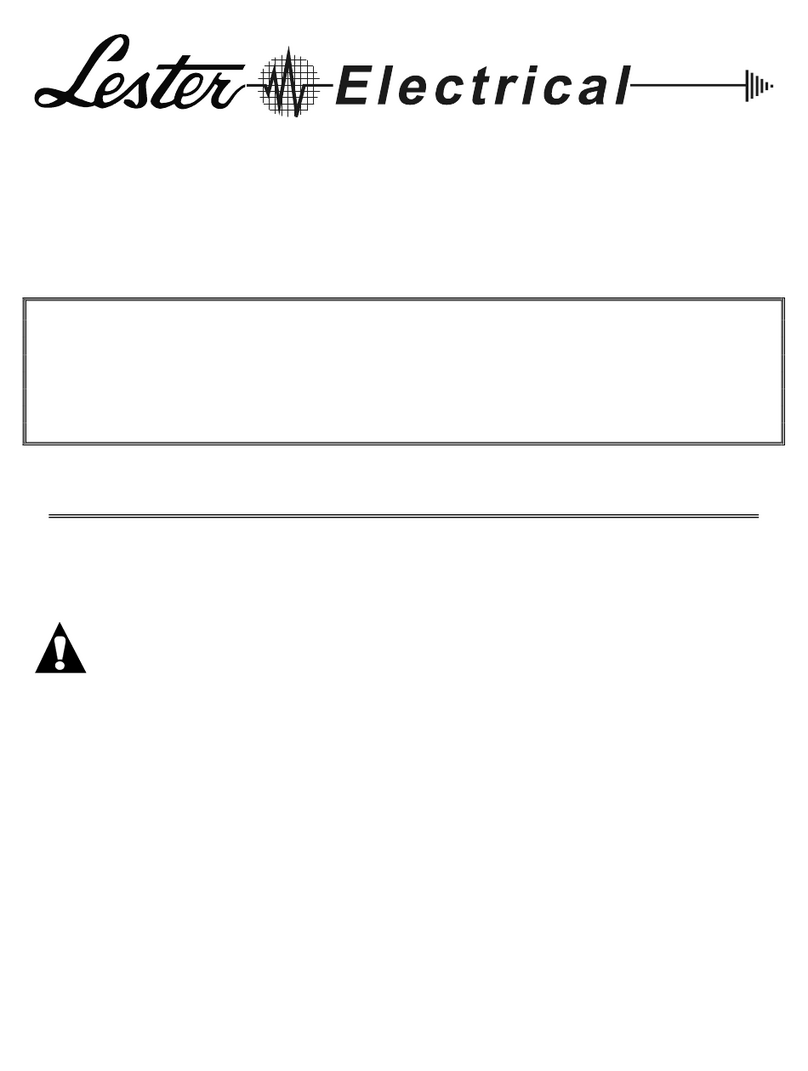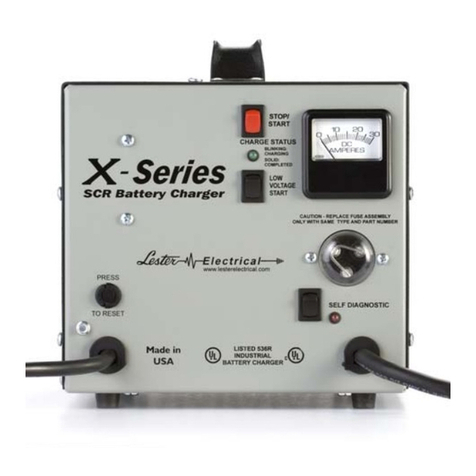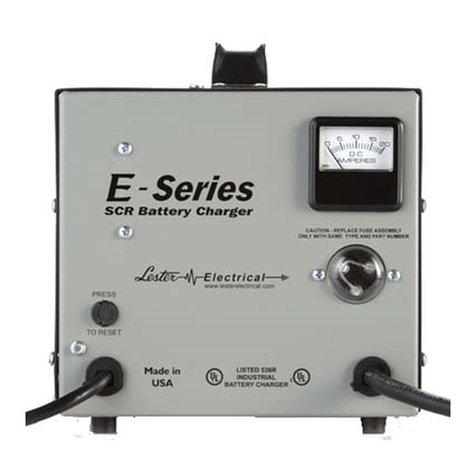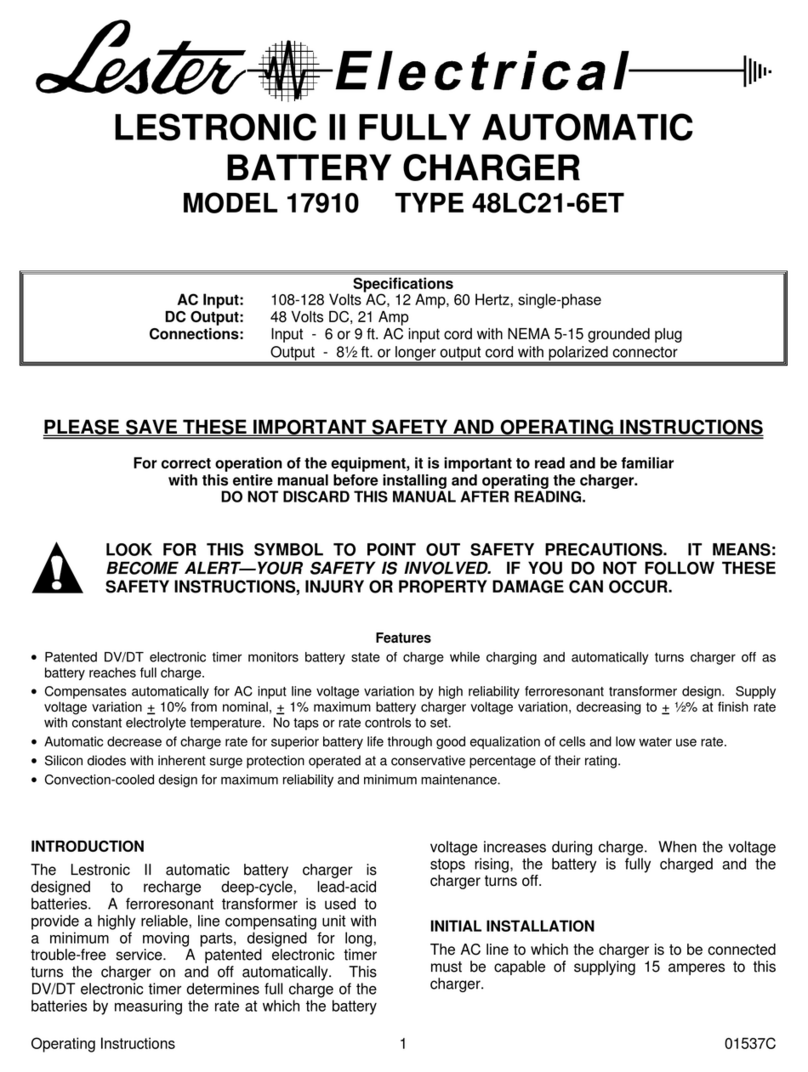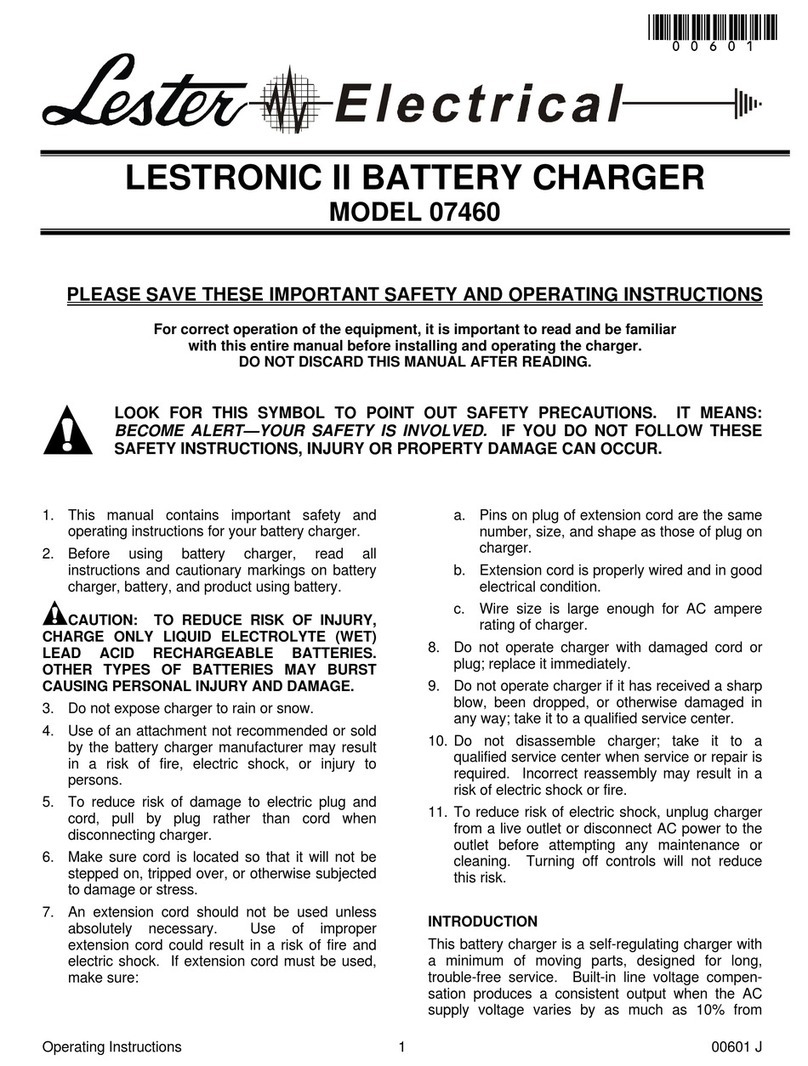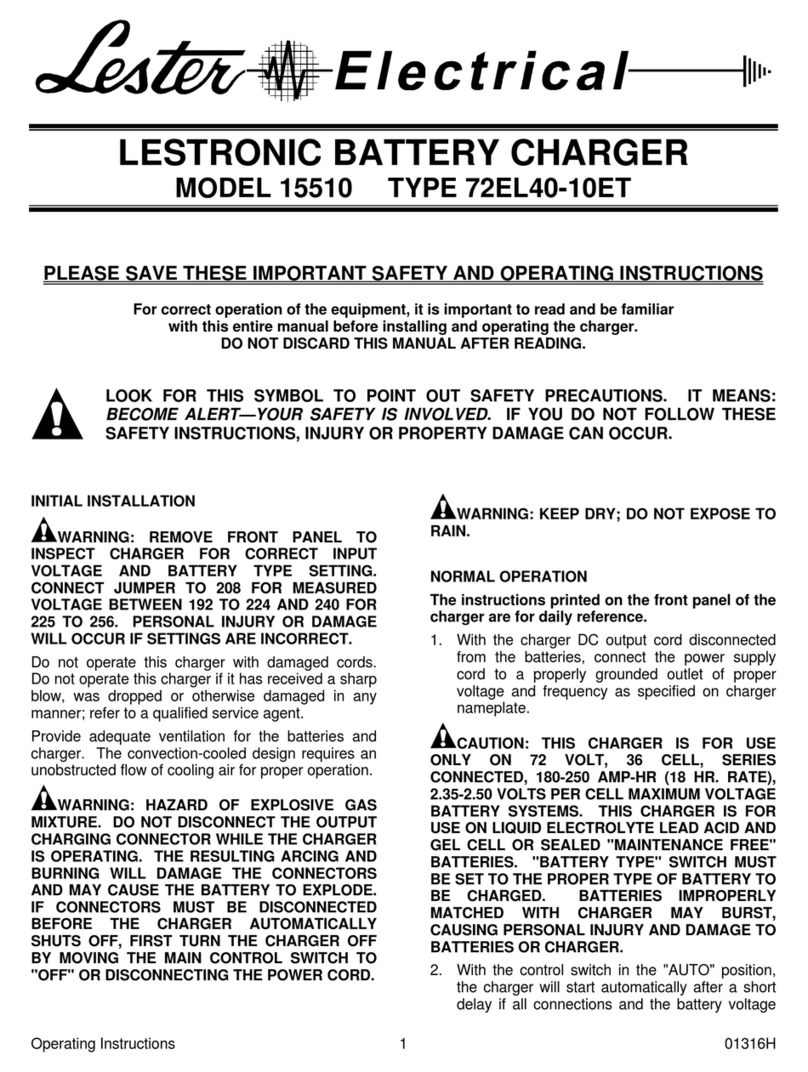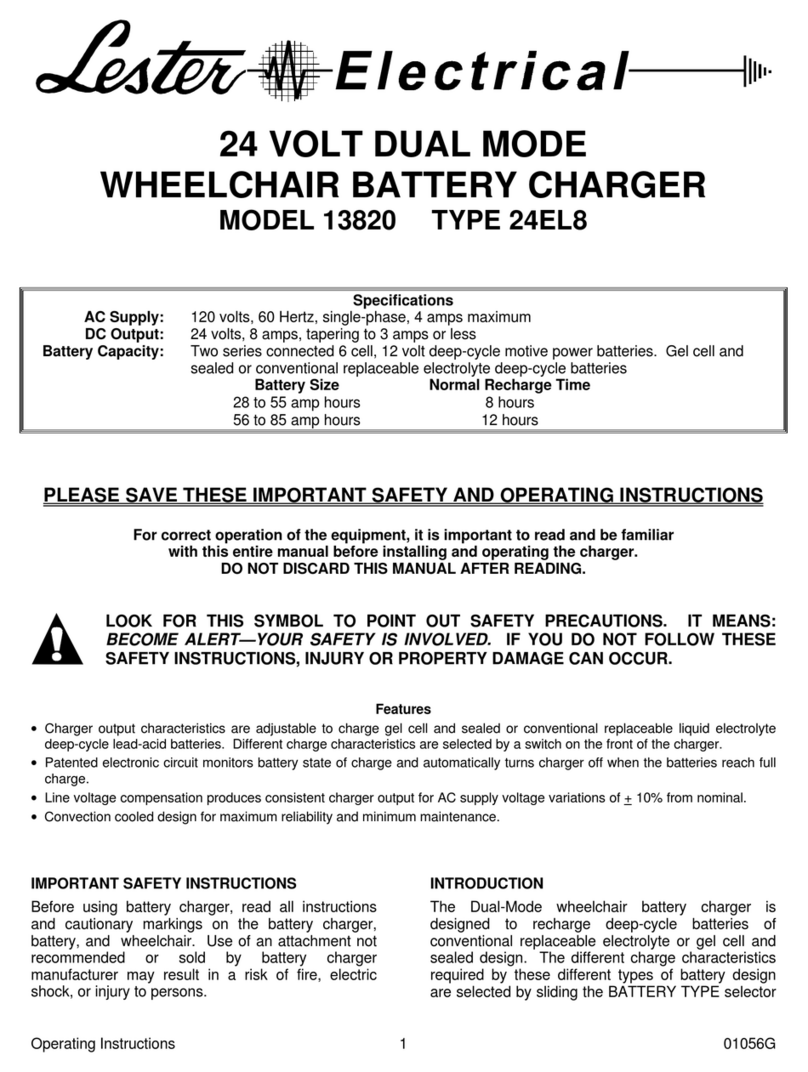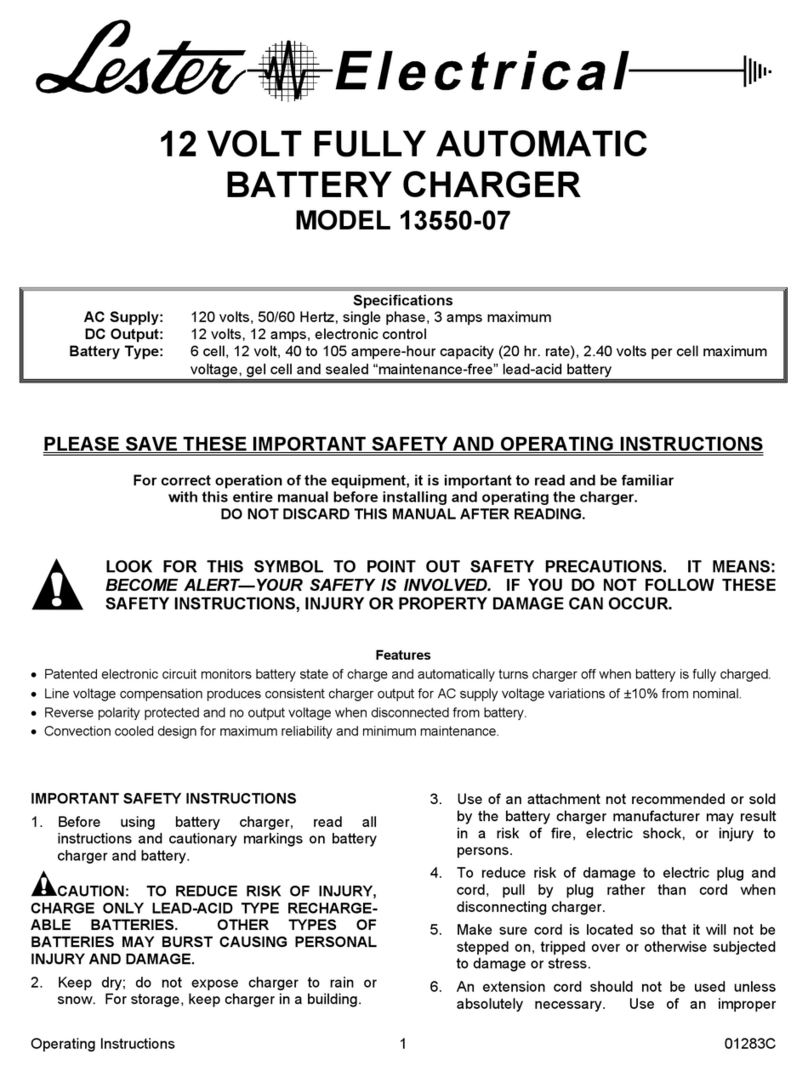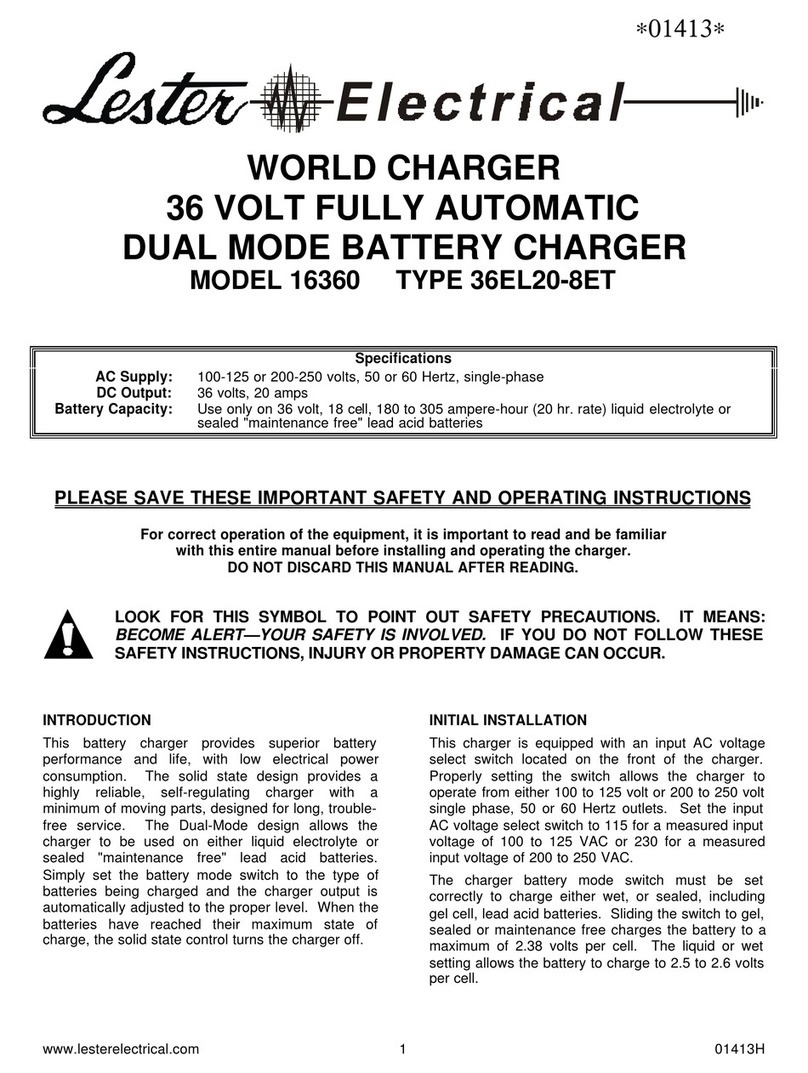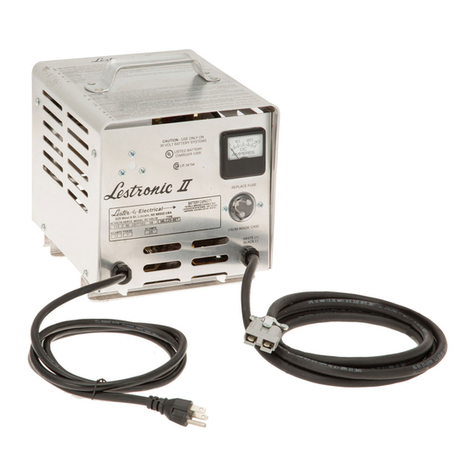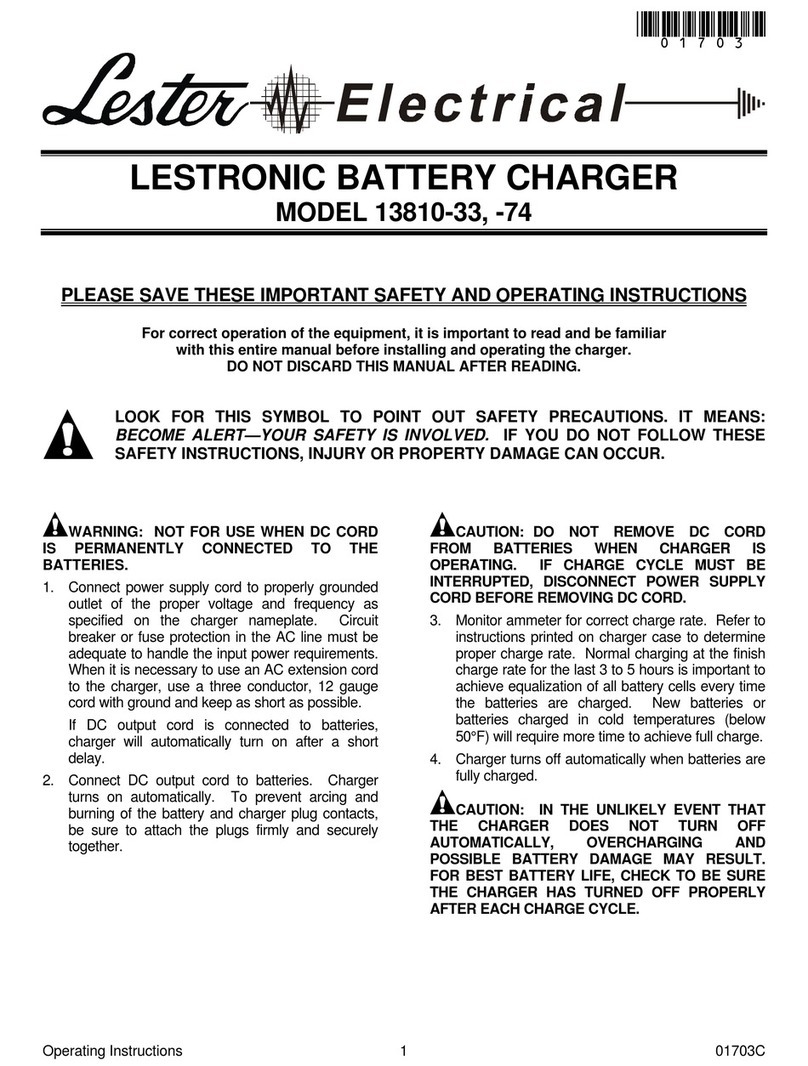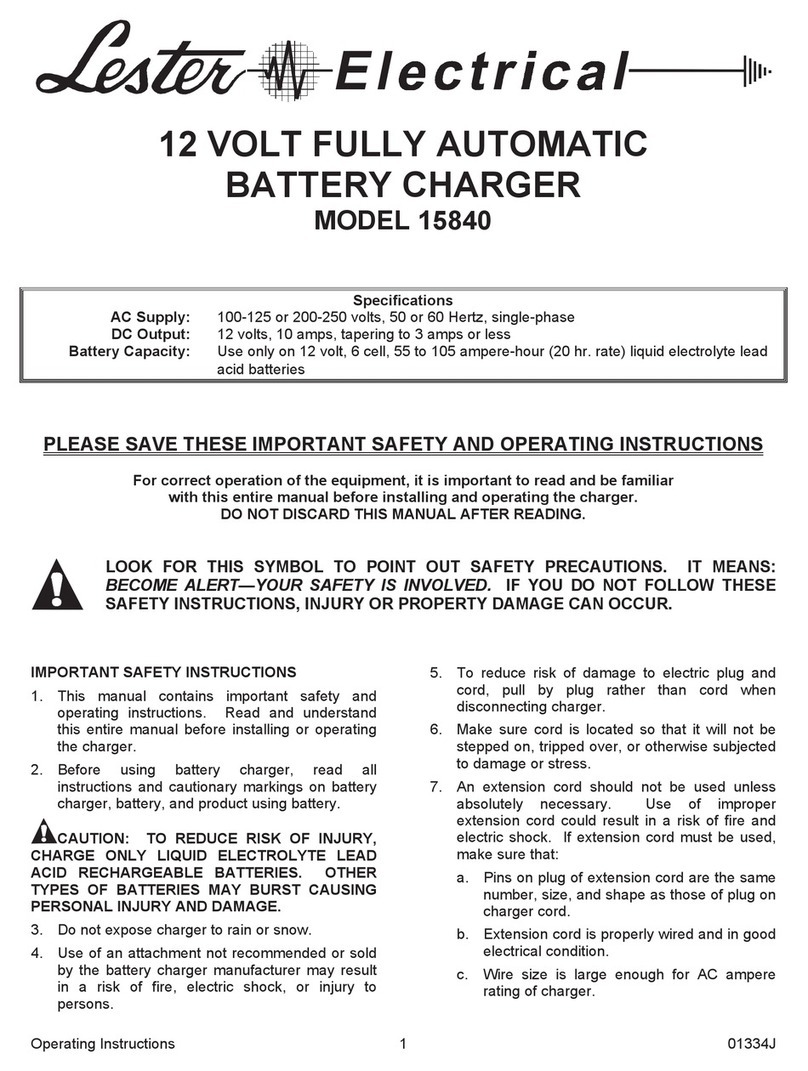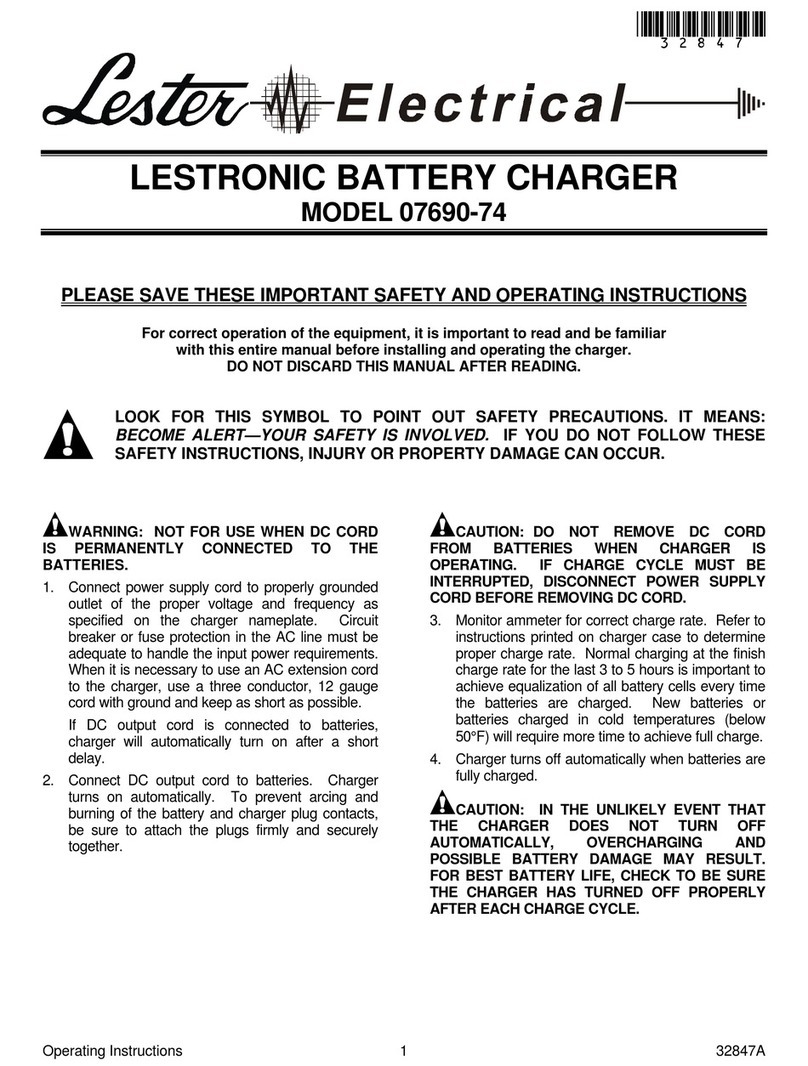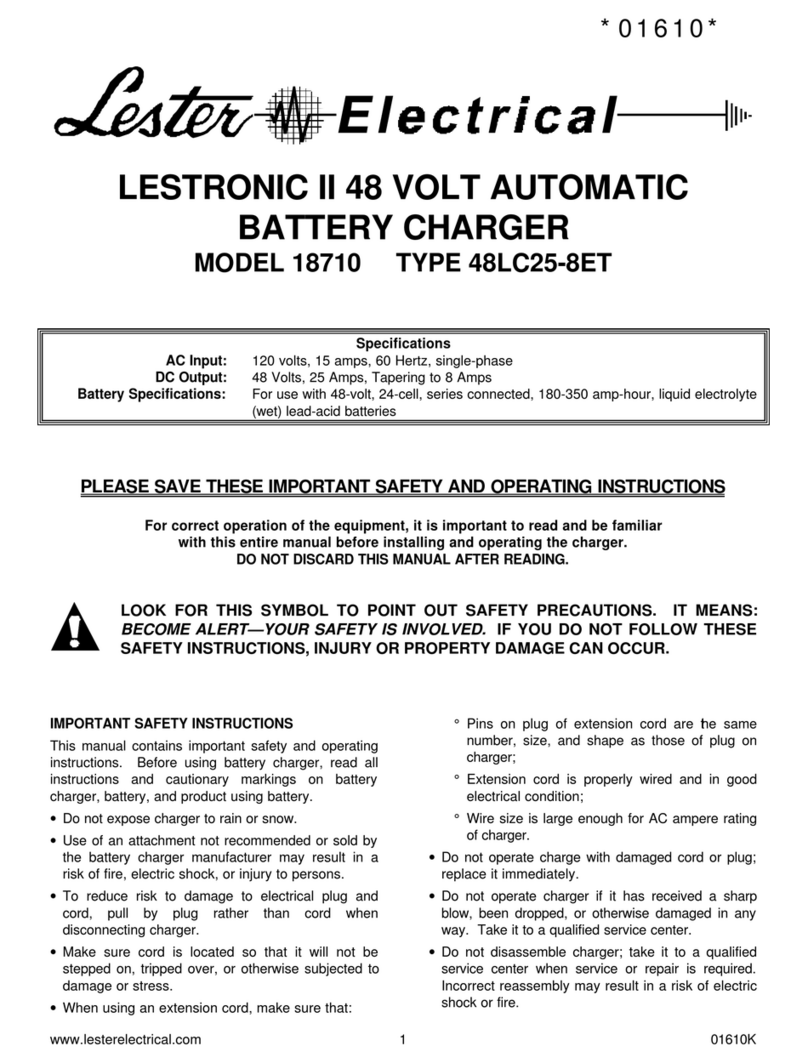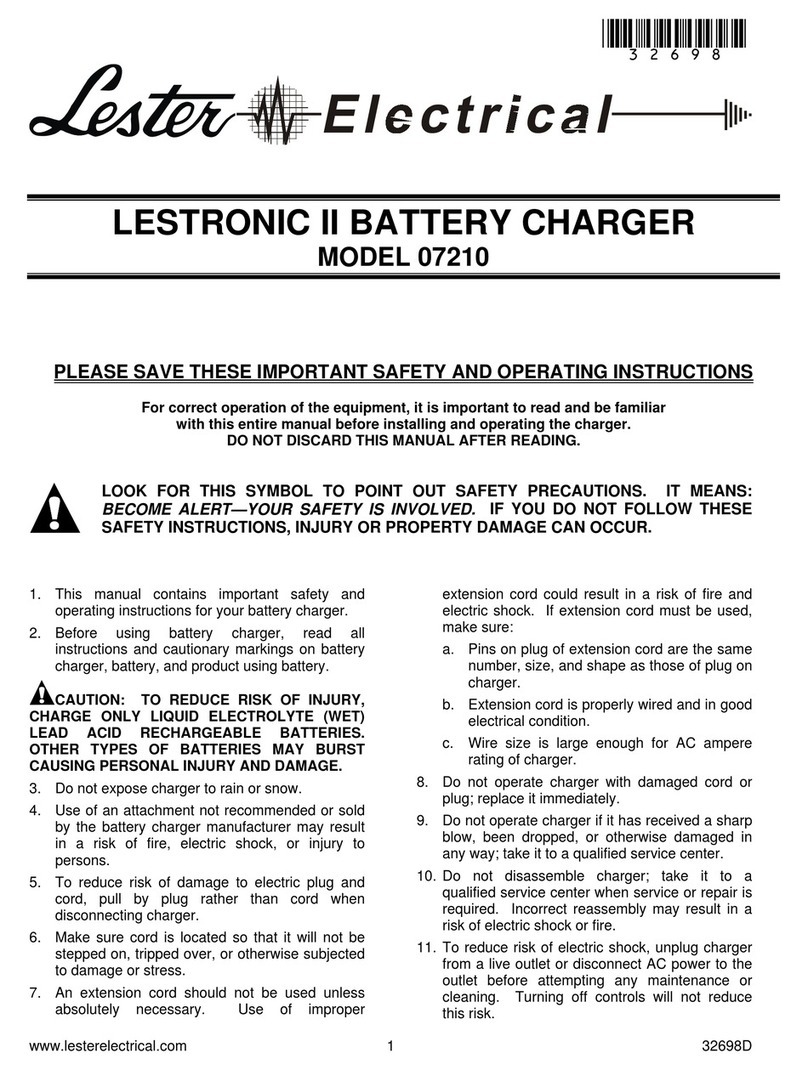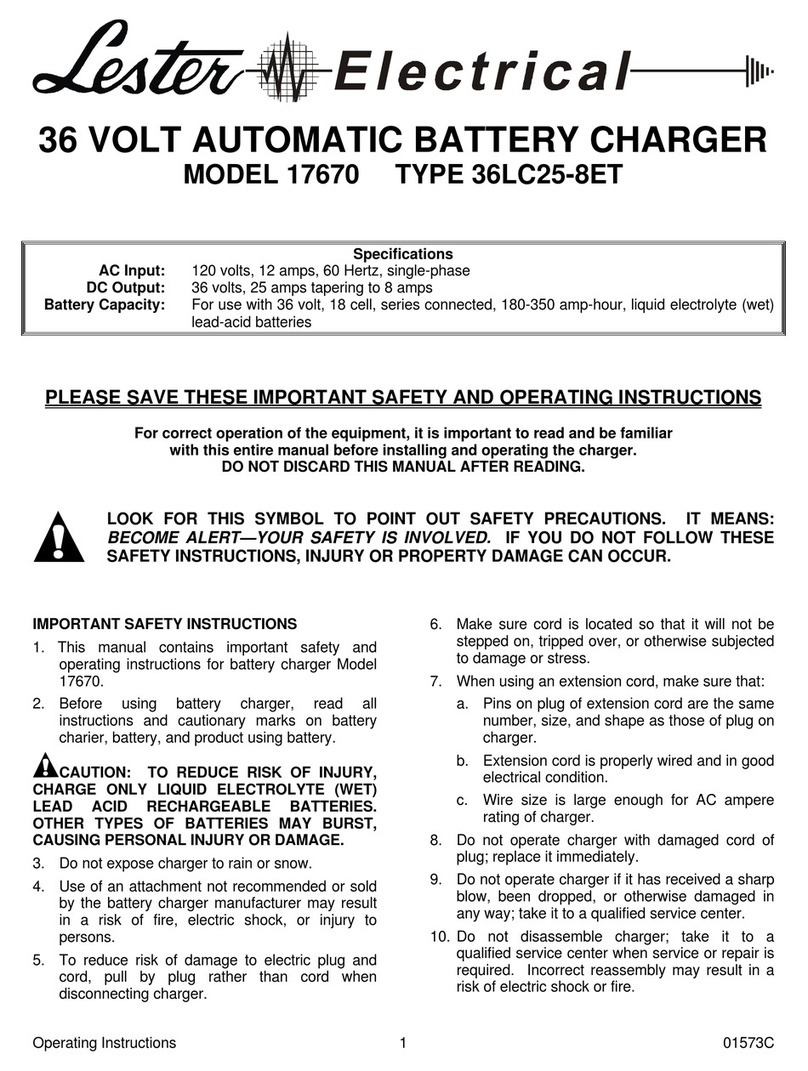
www.lesterelectrical.com 234748 A
10. Do not touch the back or sides of the case
during or just after operation of the discharge
unit. A large amount of energy is being
dissipated by the unit and the case will become
hot.
11. NEVER disconnect the discharge unit from the
batteries while the unit is operating. This will
subject the unit to heat stress and may
immediately damage or shorten the life of the
unit.
12. Do not operate discharge unit if it has received a
sharp blow, been dropped, or otherwise
damaged in any way; take it to a qualified
service center.
13. Do not disassemble discharge unit; take it to a
qualified service center when service or repair is
required. Incorrect reassembly may result in a
risk of electric shock or fire.
14. To reduce risk of electric shock, disconnect
discharge unit from batteries before attempting
any maintenance or cleaning.
RECEIVING AND INSTALLING THE UNIT
When the discharge unit is received, check for
possible in-transit damage. If any damage is found,
it should be reported as a claim to the carrier.
Proper operation of the discharge unit is important in
order to achieve good performance and to prevent
damage to the discharger and batteries. The
discharge unit should be located in a clean, cool,
dry, and well ventilated area. To permit free air flow
for cooling, allow eighteen inches (18") minimum
between the discharger and any wall or other
equipment. Position the discharger on a foundation
of stone, brick, concrete or grounded metal.
DANGER: TO REDUCE THE RISK OF FIRE,
DO NOT USE THE DISCHARGER NEAR
FLAMMABLE MATERIALS OR VAPORS.
THEORY OF OPERATION
The importance of using a discharge unit on battery
sets is two-fold:
1. To determine battery capacity.
2. To find defective cells or batteries in a battery
set.
These are accomplished by conducting a discharge
under controlled conditions as specified by the
American Golf Car Manufacturers Association
(AGCMA). The AGCMA has outlined battery
capacity measurements as follows:
Battery energy is measured in minutes obtained
upon discharging a fully charged 72 volt battery
set with a 75 amp resistive load at a temperature
of 80°F until a shut-off voltage of 63 volts (1.75
volts per cell) is reached.
To test a set of batteries to the above specification,
the battery is to be first completely charged. This
means charging the battery until the specific gravity
of the battery cells does not change in three
consecutive readings taken one hour apart.
A discharge unit is then connected to the battery and
a discharge started. Applying the 75 amp average
load will lower the voltage immediately to slightly
below nominal voltage. As the discharge
progresses, the voltage will decrease gradually at
first, then fall faster until the pre-selected shut-off
voltage is reached and the discharge shuts off.
Testing battery capacity
Battery capacity is expressed as the percentage of
time at which shut-off voltage was reached.
Example:
A 36 cell battery set rated at 107 minutes at 75
amp discharge rate is to be tested to a shut-off
voltage of 63 volts. Upon discharging a set of
fully charged batteries, the discharge unit shut
off in one hour and 32 minutes (92 minutes).
Battery capacity is therefore expressed as:
(92 / 107) * 100% = 86.0%.
Use both the battery manufacturer specifications for
battery capacity and battery performance when
determining the appropriate time for battery
replacement.
Testing for defective cells
During a discharge, all cells in a set should decrease
in voltage nearly evenly. Right before the discharger
shuts off at 31.5 volts (assuming all cells being
good), the total battery voltage is composed of 36
cells supplying 1.75 volts each or 6 twelve volt
batteries supplying 10.5 volts each. Should one or
more cells decrease faster or fail to hold their
respective load, the total discharge time will be less
to the extent it probably will not be acceptable. If, for
example, one battery is yielding only 8 volts, the
balance of the batteries must make up for this
deficiency. Further, the 8 volts for this one battery
could be caused by one or more cells being deficient
in this battery.
After the discharge unit shuts off at 63 volts, restart
the discharger to quickly monitor the individual cell
or battery voltages while the batteries are underload.
If cell or battery voltages vary considerably or any
cell voltage is below 1.75 volts or battery voltage is
below 10.5 volts, replace the low cells or batteries.
Caution should be observed, as the cells or batteries
with higher voltages should not be taken below 1.75
volts per cell (10.5 volts per battery). Some
experience will be needed to judge these conditions.
